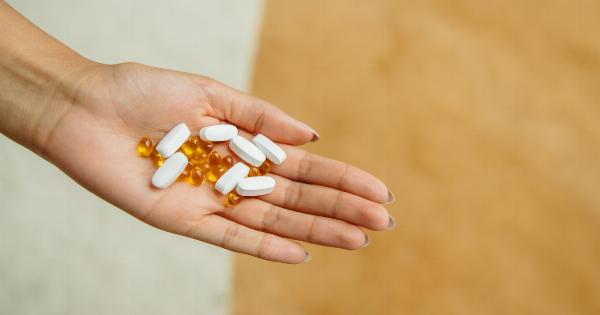Ulcers, or sores in the lining of the stomach or small intestine, can be painful and uncomfortable. Although they can be caused by a number of factors, including stress, alcohol, and certain medications, diet also plays an important role.
Making changes to your diet can help manage symptoms and promote healing. Here are some tips and tricks for an ulcer-friendly diet:.
Tip 1: Avoid Trigger Foods
Certain foods can irritate the lining of the stomach or increase stomach acid production, making ulcers worse. Some of the common trigger foods include:.
- Spicy foods
- Citrus fruits and juices
- Caffeine (coffee, tea, soda)
- Alcohol
- Tomato-based products (sauces, ketchup)
- Chocolate
It’s important to pay attention to your own body and note which foods seem to increase your symptoms. Avoiding these trigger foods can help reduce pain and discomfort.
Tip 2: Choose Ulcer-Friendly Foods
On the other hand, there are also foods that can help soothe the lining of the stomach and promote healing. These include:.
- High-fiber foods, such as whole grains, fruits, and vegetables
- Lean proteins, such as chicken, fish, and tofu
- Low-fat dairy, such as milk, yogurt, and cheese
- Healthy fats, such as olive oil, avocado, and nuts
- Foods high in antioxidants, such as berries, tomatoes, and leafy greens
Incorporating more of these ulcer-friendly foods into your diet can help reduce inflammation in the stomach and promote a healthy gut.
Tip 3: Eat Smaller, More Frequent Meals
Eating large meals can put more pressure on the stomach, leading to increased acid production and irritation. On the other hand, eating smaller, more frequent meals can help keep the stomach from getting too full and reduce symptoms.
Aim for 5-6 smaller meals throughout the day instead of 3 large ones.
Tip 4: Stay Hydrated
Drinking plenty of water and other fluids can help keep the stomach and intestines hydrated, reducing the risk of irritation.
Aim for at least 8 glasses of water per day, and consider incorporating other hydrating fluids such as coconut water or herbal tea.
Tip 5: Cook with Care
The way you prepare your food can also have an impact on ulcer symptoms. Here are some tips to keep in mind:.
- Avoid frying, as this can make foods more difficult to digest
- Choose baking, broiling, or steaming as cooking methods
- Avoid using too much oil or butter in your cooking
- Don’t add too much salt or spices to your food
By cooking with care, you can make sure that your food is easy to digest and won’t cause irritation in the stomach or intestines.
Tip 6: Consider Probiotics
Probiotics are beneficial bacteria that can help promote a healthy balance in the gut. Research has shown that certain probiotics can help reduce inflammation and promote healing in those with ulcers.
Consider incorporating probiotic-rich foods such as yogurt, kefir, and fermented vegetables into your diet.
Tip 7: Reduce Stress
Stress can exacerbate ulcers and contribute to symptoms such as stomach pain and digestive issues. Finding ways to reduce stress, such as through meditation, yoga, or other relaxation techniques, can help manage symptoms and promote healing.
Tip 8: Talk to Your Doctor
If you’re experiencing persistent ulcer symptoms, it’s important to talk to your doctor. They may recommend medications, such as proton pump inhibitors or H2 blockers, to help reduce acid production and promote healing.
By making changes to your diet and lifestyle, you can manage symptoms of ulcers and promote healing in the gut. Pay attention to your body, avoid trigger foods, and incorporate ulcer-friendly foods into your meals for optimal gut health.





























